|
If you’re a travel nut. you’ll probably want to go everywhere. After all, there’s always something to discover – a landscape, a culture, a cuisine, or perhaps just an interesting person you’ll talk about for years. There are however plenty of places that are not as inviting as we would like. War, remoteness, politics, lawlessness, corruption – there’s a number of reasons why you might want to steer clear of these places, or consider more viable alternatives. 1. North Korea As a Westerner, you’re going to have a hard time getting into North Korea, and if you do, an even harder time discovering the “real” North Korea. Tourism is heavily controlled by the government, who restrict who can come in, where they can go, what they can see, and even who they can meet. Photography is controlled (you can point and shoot only where they tell you to point and shoot), and visitors are accompanied by a North Korean chaperone at all times. 2. Bouvet Island A volcanic island located in the South Atlantic Ocean, Bouvet Island is the most remote, uninhabited island in the world. A friend of mine actually went there, filming a documentary about the world’s most travelled man. What he found was a small rocky island, covered in glaciers, with no harbour or anchorage. The nearest land base, Queen Maud Land is 1750km away in Antarctica, while South Africa's Cape Town is just a stone’s throw at 2500km away. The island, 93% of which is covered in glaciers, is a Norwegian territory, and oddly, was used as a setting in the movie Alien vs Predator. If you plan to be the world’s most travelled person, now you know where you have to go. 3. Somalia It has the longest coastline in Africa, blessed with long, undeveloped beaches. But read anything about Somalia and you’ll probably see the words: war, terrorism, lawlessness, warlords, kidnapping, and murder. The Economist reports a hotel in Mogadishu recommending guests having at least 10-armed guards, which can be quite a strain on the old budget. As for the national parks, reports state that most of the animals have been hunted for food, and are no longer protected by the government. Landmark buildings have been destroyed from shelling, while museums have largely been looted. The government of Canada advises against all travel to Somalia, further advising any Canadians inside the country to leave immediately. In the end, no beach is worth your life. 4. Pitcairn Island Although it is one of the most isolated inhabited places in the world, Pitcairn Island does receive some some tourists. Located in the South Pacific, the island is the last British territory in the Pacific. Most of the 50 people living there are descendants of mutineers on the doomed Bounty. There are no flights to the island, and getting there largely depends on whether you can convince a research vessel, cargo ship or yacht from French Polynesia or New Zealand to drop you off. Occasionally, cruise ships from Chile might stop by. There’s a museum, a UNESCO World Heritage Site full of rare birds, and a very sought-after postage stamp to chase upon your arrival. 5. Myanmar Visiting Myanmar, also known as Burma, is a hot traveller debate. On the one hand, it’s people are known to be extremely hospitable, its culture rich, and its countryside beautiful. The undeveloped state of tourism in the country has made many travellers feel an authenticity in their experience, perhaps lacking in other Asian countries. However, the political turmoil and iron-fisted dictatorship in Myanmar has led to widely reported human rights abuses. Still, roughly 350,000 tourists visit every year, although the government, who tend to prohibit independent travellers, strictly controls travel in and around the country. Government approved agencies facilitate tour groups, but perhaps the most difficult aspect of visiting this country is deciding whether or not you should visit at all. 6. The War Zones (Iraq, Afghanistan, Northwest Pakistan) Unless you’re a soldier, fighting for one side or the other, chances are you’re going to find it very difficult to enter into a warzone. So you probably won’t find many not tourists, hitching around with an out-of-date Lonely Planet, hoping to take in the sites (RIP Palmyra), and interact with locals. “Canadians who choose to stay despite the warning should be accompanied by professional security escorts at all times,” advises the Canadian Foreign Ministry, shortly after advising that nobody should enter Iraq in the first place. 7. Alert, Nunavut Like basking in the sun? In summer, head north to Iqualit, Nunavit’s capital. Once you there, get on a plane, and head north again, say about 2000km, and you’ll arrive in Alert, the most northernmost permanently inhabited place on earth. Alert is just 800km from the North Pole. From April to September, you can bask in sun 24 hours a day, but you’ll still need to cover up, as temperatures only breach, barely, 0C in July and August. Of course, there are also 6 months of pure darkness, which must weigh heavy on the five permanent residents. To join these Arctic researchers, you’ll have to hop aboard a scheduled military flight. 8. Iran Three US backpackers discovered what happens if you mistakenly set foot in Iran. They were locked up as spies, suffering two years in prison before their release was negotiated. It is a pity. Iran has many historical monuments, beautiful mountains, lakes, and gorgeous beaches too. It does market itself to tourists, and has invested in a tourism infrastructure, but just a fraction of those who visit are Westerners. Iran’s political volatility makes it a difficult destination for travellers, who should consult established agencies and government offices before thinking of visiting. 9. Area 51 It’s going to be extremely difficult to visit a place that officially doesn’t exist. Even more so since this place that doesn’t officially exist has big fences with barbwire and very official looking signs warning trespasses that they will be arrested. Area 51 is the legendary top-secret military base located in the Nevada desert. UFO enthusiasts have long flocked to its well-protected edges drawn to legends of spaceships hovering over its area, and even aliens taken captive. Only 83 miles from Las Vegas, the US deny using this space to test the latest aircraft and weapons. Up until 1995, there were some viewpoints, but government agents, suspiciously dressed in black, have seized these areas. Your best bet for a view is Tikaboo Peak, about 26 miles east, which requires a 4x4 and powerful set of binoculars. 10. Tristan da Cunha
We’ve finally arrived at the most remote inhabited spot on earth, an archipelago in the Pacific located over 1750 miles from South Africa, and 2000 miles from South America. The main island has a population of 275, which is a metropolis compared to the Pitcairn Island, but deals with the same challenges. No airstrip, with supplies and few visitors breezing through on passing cargo ships. The island’s 80 families share just 8 surnames, and are mostly farmers with smallholdings. Tristan da Cunha is known for its remoteness, and also its wildlife, which include over a dozen breeding seabirds. Before you hitch aboard a ship in Cape Town, you’ll need prior permission from the Island Council to land on Tristan, which includes a return ticket of passage. There are two guesthouses, or you can stay with a local family as a paying guest.
0 Comments
In 1989, one of my favourite authors, Douglas Adams, set out around the world to find animals most at risk. His book, Last Chance to See, tracked endangered animals and birds like the Aye Aye in Madagascar, China’s Yellow River Dolphin, and the Amazonian Manatee in Brazil. Decades later, climate change and rising sea levels is threatening not only animals (see Elizabeth Kolbert's Pulitzer Prize-winning Sixth Extinction), but also entire nations. These are the ones most at risk: Vietnam Since emerging out of isolation in the 1980’s, Vietnam has become one of the world’s fastest growing economies. Unfortunately, according to the World Bank up to 16% of its area, 35% of its people and 35% of its gross domestic product could be wiped out if sea levels rise by just 5 metres. Climate change has been detrimental to this Southeast Asian nation, with an increase in the severity of floods, drought and typhoons. Entire blocks of Ho Chi Minh City were underwater at the end of 2011, with vast portions of the country flooded. Kiribati Straddling the equator in the Pacific Ocean, the Republic of Kiribati is an island nation of 100,000 people, living on 32 atolls spread out over a staggering 3.5 million square kilometres. Its largest urban centre, Tarawa, sits at less than 3m above sea level, with an average width of just 450 metres. Besides rising sea levels, storm surges, drought, cyclones, and shoreline erosion have made it one of the most vulnerable countries to climate change. Fortunately, with the aid of the World Bank, the Global Environmental Facility and others, Kiribati’s government has instituted a series of “adaption measures” it hopes will ensure its survival. Tanzania Deforestation, pollution, poaching, urban expansion, and now climate change are seriously threatening the future of 200 endangered animal species in Tanzania. These include the black rhino, hammerhead shark, wild dog and bush baby. Meanwhile, Tanzania’s Ministry of Environment reports that up to 80% of the glaciers atop Mount Kilimanjaro have vanished over the last 50 years, largely due to deforestation and warmer temperatures. This could threaten drinking and irrigation water supplies for millions in the surrounding area. Barbados Barbados, a popular winter getaway located in the North Atlantic, is facing more intense hurricanes, coastal erosion, algae blooms, rising sea levels, and damaging coral bleaching. The government has been working for nearly 30 years to protect its threatened coastal zone, which thanks to tourism, also serves as the country’s best economic resource. It has spent millions of dollars helping to stabilize erosion along its 97km stretch of coastline, including building a waterfront promenade that doubles as a tourist attraction and coastal buffer for devastating windstorms. Bangladesh Floods, cyclones, and tornadoes devastate Bangladesh almost annually, and climate change is only making it worse. Although it’s coastline is relatively small, if sea levels rise just one metre, it will inundate up to 30% of the country, with a devastating impact on an estimated 40 million people. Its monsoon season has been getting increasingly warmer and its winters cooler, causing glacial melt in the Himalayas and increased flooding of inland areas. In 1998, the country saw the worst flooding in modern world history, displacing 30 million people and flooding two-thirds of the country. Nepal Rising temperatures have caused extensive glacier melting, and the result has been a serious increase in floods and landslides for Nepal. Rainfall has become more unpredictable, typically followed by periods of drought, all of which has impacted communities around the country. Some towns have responded by growing a species of flood tolerant rice, or elevating tube wells to prevent water contamination during flood seasons. Nepal is working with various environmental organizations to help the risk of glacier lake outburst floods, but remains constantly at threat. All this beyond the catastrophe of earthquake. Maldives In 2009, the government of the Maldives drew worldwide attention to its environmental risk by holding a cabinet meeting underwater. 80% of the country’s 1200 islands in the Indian Ocean sit just one metre above sea level. Some scientists predict the ocean will literally swallow the Maldives, displacing the country’s 390,000 population. It took 14 years for the government to build a 3 metre high wall around the capital city of Male, protecting the population from tidal surges, but not from rising sea levels. The government has looked at land purchases in Sri Lanka, India and Australia for the relocation of what could be the world’s first environmental refugees. Bhutan This landlocked Asian kingdom is located at the eastern end of the Himalayas, making it particularly vulnerable to melting glaciers, and the formation of glacier lake outburst floods (GLOF). Also known as the “silent tsunami”, a GLOF threatens whatever lies downstream – people and agriculture. As temperatures continue to rise, the disappearance of Himalayan glaciers, the “water towers of the world”, spells the loss of fresh water reserves for millions of people. Malawi This poor, landlocked country in southern Africa does not have to worry about rising sea levels, but rather the onset of frequent and intense droughts. The World Bank has identified the country as being most at risk from droughts, with temperatures rising above the global average, impacting crops and agriculture. Disaster Risk Management faces a challenging mix of poor farmers, rapid deforestation and increasing soil erosion. Tuvalu
This Pacific Island nation sits on a string of nine coral atolls with the highest point being just 4.5 metres above sea level. It has already reported losing one metre of land around the circumference of its largest atoll. The country hopes to shift 100% to renewable energy by 2020, hoping to inspire other nations to do the same. Meanwhile, increased salinity in the water has caused problems for what little agriculture the nation has. The population of 12,000, living on just 26 square kilometres of land, has also toyed with the idea of resettlement abroad. |
Greetings.
Please come in. Mahalo for removing your shoes. After many years running a behemoth of a blog called Modern Gonzo, I've decided to a: publish a book or eight, and b: make my stories more digestible, relevant, and deserving of your battered attention. Here you will find some of my adventures to over 100 countries, travel tips and advice, rantings, ravings, commentary, observations and ongoing adventures. Previously...
July 2024
Categories
All
|

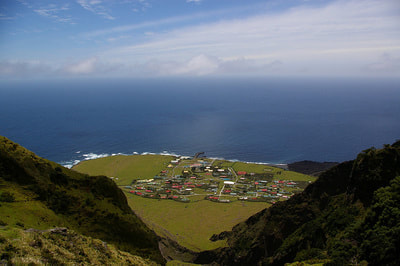
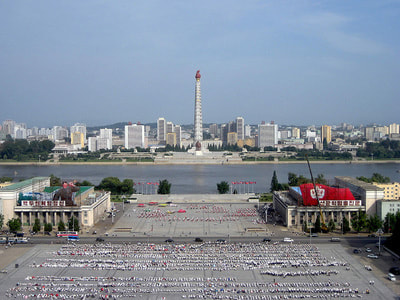
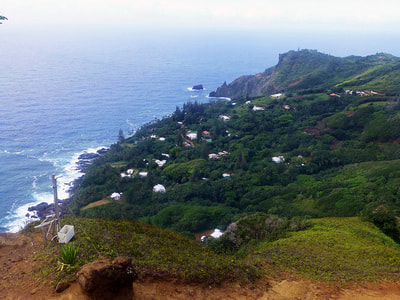
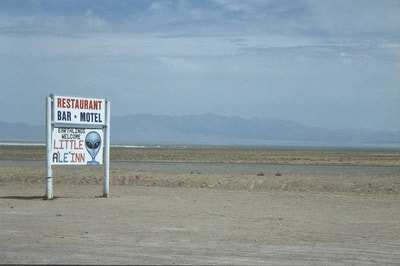
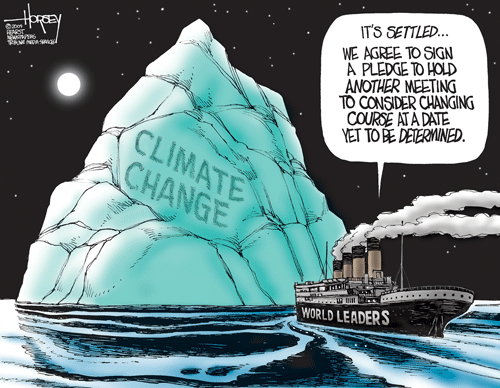

 RSS Feed
RSS Feed

